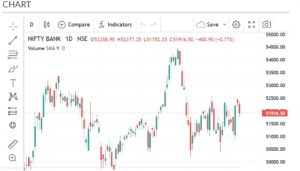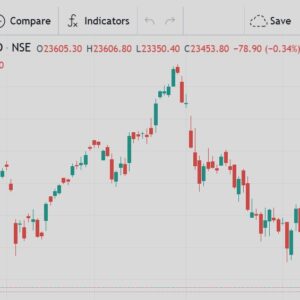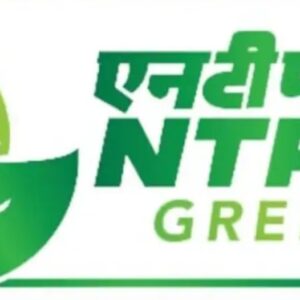What is Bank Nifty? A Comprehensive Guide to Understanding India’s Benchmark Stock Index

The Bank Nifty Index, also known as NIFTY Bank, is one of the most significant stock market indices in India, focusing exclusively on the country’s robust banking sector. This index plays a vital role in reflecting the health and performance of the financial industry, making it a crucial indicator for investors, analysts, and policymakers. In this comprehensive guide, we dive deep into what Bank Nifty represents, how it is structured, its components, and why it is a key player in the Indian stock market. Understanding Bank Nifty can provide invaluable insights for anyone interested in the Indian financial markets and the banking sector.
Understanding Bank Nifty: An Overview
What is Bank Nifty?
The NIFTY Bank Index is a sectoral index launched by the National Stock Exchange (NSE), India’s leading stock exchange, on September 15, 2003. It comprises the top 12 publicly listed banking companies in India, selected based on market capitalization, liquidity, and trading volume. The index provides investors with a benchmark to gauge the performance of the banking sector and represents the health of the Indian economy’s financial backbone.
The primary purpose of Bank Nifty is to capture the capital appreciation of the banking sector, offering investors an accurate reflection of how this sector performs. Given the integral role banks play in the economy—by facilitating loans, investments, and savings—the Bank Nifty index is closely monitored by institutional and retail investors alike.
Why is Bank Nifty Important?
Bank Nifty is not just a measure of banking sector performance but also a broader reflection of the Indian economy’s financial stability. Since the banking sector is pivotal to economic growth and credit distribution, any fluctuations in Bank Nifty can be viewed as indicators of the economic climate. Furthermore, Bank Nifty’s performance can directly affect the overall NIFTY 50 Index, due to the significant weightage of banking stocks within the Nifty 50.
As banking stocks are known for their volatility and high correlation with economic indicators like interest rates and inflation, the Bank Nifty index becomes essential for traders who want to capitalize on short-term trends, as well as long-term investors who believe in the potential growth of India’s financial sector.
Components of Bank Nifty
The Bank Nifty Index consists of the top 12 Indian banking stocks listed on the NSE, covering both private sector and public sector banks. These banks are selected based on specific criteria, including market capitalization, trading frequency, and sector representation. Here are some of the major banks typically included in the Bank Nifty Index:
- HDFC Bank Ltd.
- ICICI Bank Ltd.
- State Bank of India (SBI)
- Axis Bank Ltd.
- Kotak Mahindra Bank Ltd.
- IndusInd Bank Ltd.
- Bank of Baroda
- Punjab National Bank (PNB)
- IDFC First Bank
- Federal Bank Ltd.
- RBL Bank Ltd.
- AU Small Finance Bank Ltd.
These banks are carefully selected to reflect the performance of both private and public banking institutions, ensuring a comprehensive snapshot of India’s banking sector.
How is Bank Nifty Calculated?
The Bank Nifty Index is calculated using the free-float market capitalization method, similar to other Nifty indices. In this method, only the shares available for public trading are considered, excluding any promoter-held shares or government-held shares. This approach ensures that Bank Nifty accurately reflects the investable market and provides a realistic picture of the sector’s performance.
The Bank Nifty Index level is derived using the formula:
Bank Nifty Index = (Total Free-Float Market Capitalization of Constituents / Base Market Capitalization) x Base Index Value
Bank Nifty was assigned a base value of 1,000 points in 2000, and its movement is a function of the price movements of its component stocks, weighted by their market capitalization. This methodology ensures that larger banks with greater market influence impact the index more significantly than smaller banks.
Factors Influencing Bank Nifty Performance
1. Interest Rate Changes
Interest rates directly impact banking stocks, as banks rely on interest spreads (the difference between lending and borrowing rates) for profitability. Reserve Bank of India (RBI) interest rate policies can lead to shifts in Bank Nifty. An increase in interest rates typically narrows profit margins, while a decrease can lead to growth in loan disbursements, benefiting the index.
2. Inflation Rates
Inflation influences banks’ lending capabilities. High inflation may lead to an increase in interest rates, impacting the profitability of banks and, consequently, Bank Nifty. Low inflation, on the other hand, can lead to favorable lending conditions, which positively affect the index.
3. Credit Growth
Credit growth, or the expansion of loan portfolios, is essential for a bank’s revenue. High credit growth rates reflect strong demand for loans, which positively impacts Bank Nifty, while a slowdown in credit growth can signal economic issues, leading to a potential decline in the index.
4. Government Policies
Government regulations, such as reforms in banking policies, loan waivers, or sectoral bailouts, significantly affect Bank Nifty. Public sector banks, in particular, are often more sensitive to government policies than private sector banks, making policy announcements an important determinant of Bank Nifty movements.
5. Global Economic Events
Global events, such as changes in US Federal Reserve policies, global economic slowdowns, or geopolitical tensions, can influence foreign investor sentiment, affecting Indian banking stocks and Bank Nifty. Foreign institutional investors (FIIs) frequently adjust their portfolios based on global cues, making international events relevant to the index’s performance.
Bank Nifty: A Trader’s Perspective
Bank Nifty as a Volatile Index
Due to its exclusive focus on the banking sector, Bank Nifty is inherently more volatile than broader market indices. This high volatility can lead to significant daily price fluctuations, presenting lucrative opportunities for day traders and short-term investors. Traders often leverage Bank Nifty futures and options for intraday trading, taking advantage of the index’s price swings. This volatility is often exacerbated during economic announcements, policy changes, or quarterly earnings results.
Popular Bank Nifty Trading Strategies
- Trend Following Strategy: Traders use moving averages to determine the trend of Bank Nifty. In an uptrend, they may consider going long on Bank Nifty, while in a downtrend, short positions are preferred.
- Range-Bound Strategy: Traders often identify support and resistance levels for Bank Nifty and trade within those levels. Buying near support and selling near resistance is a common approach.
- Breakout Strategy: Bank Nifty’s high volatility makes it ideal for breakout strategies, where traders capitalize on sharp price movements when the index breaks above resistance or falls below support levels.
- Option Writing: Due to high volatility, option writers often prefer Bank Nifty for strategies like straddle or strangle, taking advantage of the premium received from option buyers.
How Can Investors Use Bank Nifty for Long-Term Investment?
While Bank Nifty is known for short-term trading, it is also suitable for long-term investments due to the growth potential of the Indian banking sector. For investors seeking exposure to the financial sector, investing in Bank Nifty ETFs or index funds offers a diversified approach to capitalize on the sector’s growth.
Long-term investors may benefit from Bank Nifty’s correlation with the broader economy. As India’s economy expands, the banking sector is poised to grow, benefiting from rising credit demand, digital banking innovations, and increasing financial inclusion. Hence, a well-timed entry into Bank Nifty can yield substantial returns over the years.
Conclusion
The Bank Nifty Index stands as a crucial barometer of the Indian banking sector, offering both traders and investors insights into the health of the financial industry. By tracking the performance of the top 12 Indian banks, Bank Nifty provides a snapshot of economic stability and sectoral growth. Influenced by interest rates, government policies, global economic trends, and credit growth, Bank Nifty is both a dynamic trading instrument and a valuable long-term investment vehicle.
Whether you’re a day trader looking to capitalize on intraday volatility or a long-term investor seeking growth in the banking sector, understanding Bank Nifty’s components and influencers is key to making informed decisions.










Your blog is a testament to your dedication to your craft. Your commitment to excellence is evident in every aspect of your writing. Thank you for being such a positive influence in the online community.
My brother suggested I might like this website He was totally right This post actually made my day You cannt imagine just how much time I had spent for this information Thanks